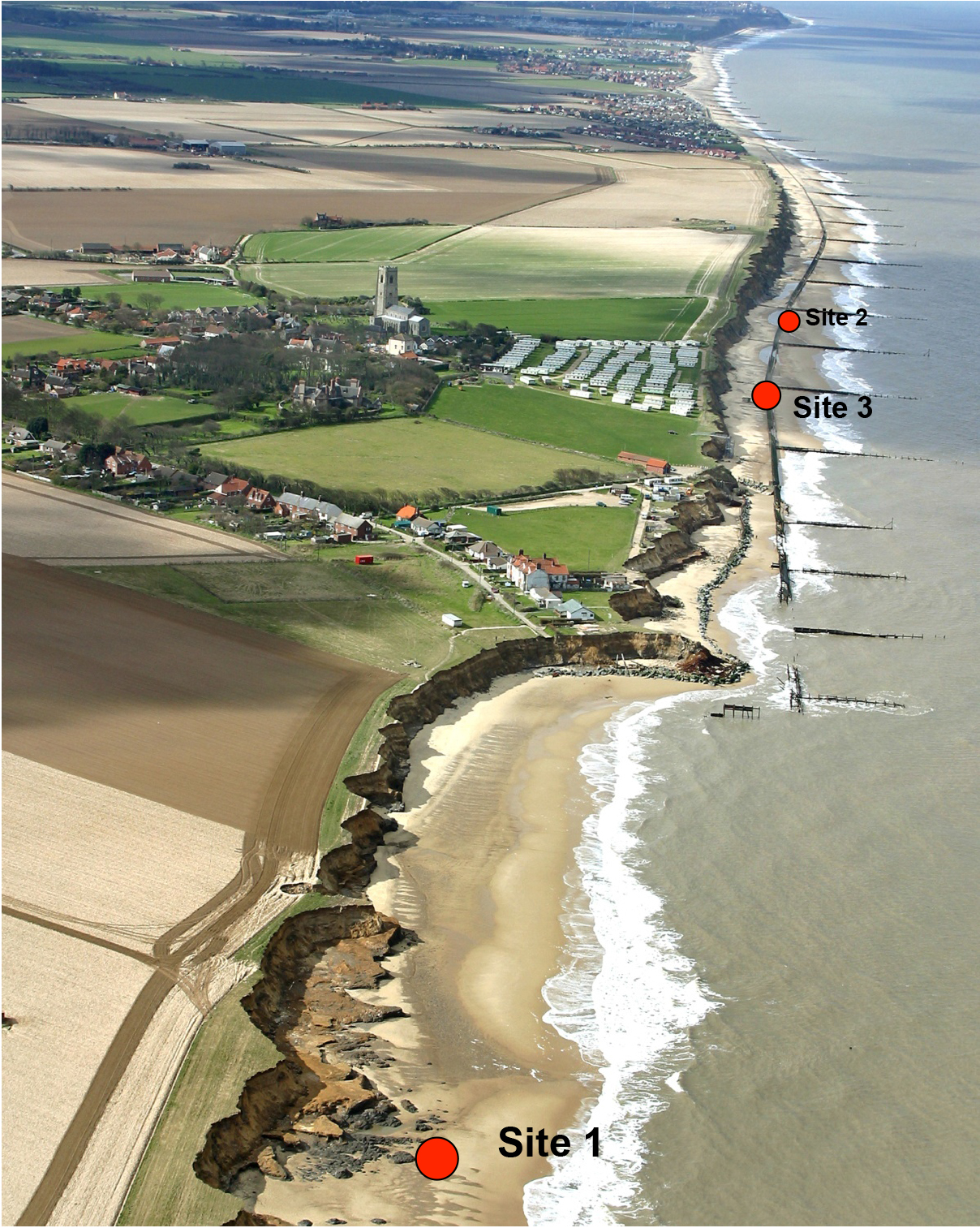
Happisburgh Site 3 was discovered in 2005 during a survey of a 2 km stretch of eroding coastal cliff between Happisburgh and Ostend (Parfitt et al. 2010). The cliffs are formed of glacial sediments of MIS 12 age. Beneath the glacial sediments lie a complex series of channels filled with fluvial gravels interdigitating with laminated silts and sands of estuarine origin, laid down by a large river. The lithology of the gravels suggests that the site lay on a course of the proto-Thames. The dating is based on reversed palaeomagetism, biostratigraphy and lithostratigraphy, which in combination indicate an Early Pleistocene age between c. 0. 78 and 1.0 Ma (Parfitt et al. 2010). The sediments contain a rich array of environmental data, including pollen, plant macros, foraminifera, ostracods, beetles, molluscs and vertebrate remains. The pollen sequence indicates a cooling climate with a regional vegetation change from deciduous woodland to conifer dominated forest. There are two cooling phases in the late Early Pleistocene to which the site might date of either 950,000 or 850,000 years ago. In combination the fauna and flora indicate that the local environment was a mix of grassland and marshy pools on the edge of the river with occasional indications of saltmarsh and brackish water. The archaeology consists of over 170 flint artefacts, the majority from the gravel of bed E, but also from beds D and C. They are in a very fresh condition and can be regarded as being in primary context.
In May 2013 human footprints were discovered on a surface of the laminated sands and silt c. 100 m to the south-east of Site 3 (Ashton et al. 2014). Recording by multi image photogrammetry established 49 clear prints of various sizes, the largest being c. 27 cm in length, probably representing a male of just over 170 cm in height. Other prints may represent adolescents or women and undoubtedly children, perhaps suggesting a family group. The orientation of the prints indicates movement in a southerly direction.
Nearby Site 1 preserves an even older horizon.
Context |
Bed C (laminated sand and silt) |
Bed D2 (grey pellety clay) |
Bed D3 (sand with clay laminae) |
Bed E (sand and gravel) |
Flake tools |
|
1 |
|
12 |
Cores |
|
|
|
4 |
Flakes |
2 |
|
1 |
153 |
|



